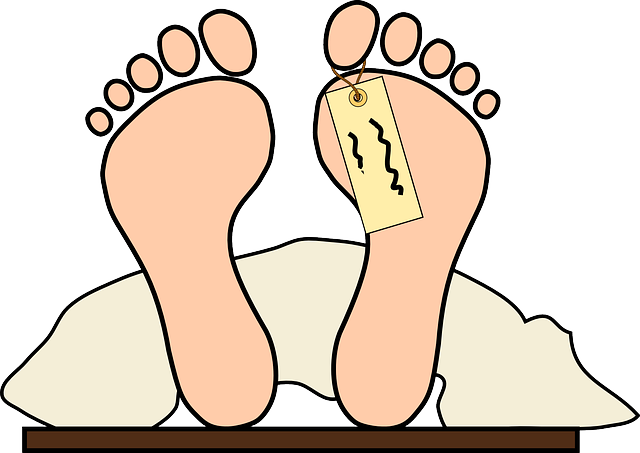Skin tags, harmless growths appearing anywhere on the body, often seek removal for cosmetic reasons. Accessible in Leeds, treatment options range from at-home remedies like salicylic acid or vitamin E to professional procedures like cryotherapy, laser therapy, or surgical excision. Choosing between these methods depends on preference for swift, guaranteed results (professional) versus cost-effective, accessible alternatives (home remedies). To prevent recurrence, maintain healthy skin through moisturizing, exfoliation, and sun protection, with regular self-examinations and professional guidance from a Leeds dermatologist recommended.
Skin tags, those tiny, harmless growths on the skin, might be a nuisance. If you’re looking for effective Skin Tag Removal Leeds has several options. This guide explores understanding skin tags, their causes and types, common removal methods in Leeds, the battle between professional treatments and home remedies, and crucial aftercare tips. Discover the best approach to eliminate these small irritants and maintain healthy skin.
- Understanding Skin Tags: Causes and Types
- Common Methods for Skin Tag Removal in Leeds
- Professional vs Home Remedies: Which is More Effective?
- Prevention and Aftercare: Keeping Your Skin Healthy
Understanding Skin Tags: Causes and Types
Skin tags, also known as acrochordons, are small, soft skin growths that typically appear on the neck, armpits, and groin area. They can vary in size, ranging from a few millimetres to a centimetre or more, and often resemble small warts or pieces of skin that have been torn loose. While they are generally harmless, many people prefer to remove them for cosmetic reasons or because they find them irritating or uncomfortable.
There are several types of skin tags, with the most common being acral verrucae, which usually occur on the hands and feet, and dermatofibromas, which are firmer and more elevated growths that can be found anywhere on the body. The development of skin tags is often linked to insulin resistance, obesity, or frequent friction in specific areas. In terms of Skin Tag Removal Leeds, various methods are available, including over-the-counter treatments, surgical excision, cryotherapy (freezing), and laser procedures, each with its own pros and cons that a qualified professional can help determine based on the individual’s case.
Common Methods for Skin Tag Removal in Leeds
In Leeds, several common methods for skin tag removal are readily available. One popular approach is cryotherapy, where a liquid nitrogen probe is used to freeze and destroy the tags. This quick procedure is often carried out in dermatology clinics and is effective for many, though it may cause temporary redness or itching post-treatment. Another method gaining traction among Skin Tag Removal Leeds seekers is laser therapy, which targets the skin tags with precise laser beams to burn them off.
Surgical excision is another option, involving a minor procedure where the tag is cut away using surgical scissors or a scalpel. This method offers permanent removal but may leave a small scar. Less invasive options include over-the-counter cremes and salves that contain ingredients like salicylic acid or vitamin E, which can help exfoliate and remove tags gradually over time. These at-home remedies are often preferred for their convenience and lower cost, though they might take longer to show results.
Professional vs Home Remedies: Which is More Effective?
When it comes to skin tag removal, there are two prominent paths to consider: professional treatments and home remedies. In terms of effectiveness, both have their merits and drawbacks. Professional services, like those offered by Skin Tag Removal Leeds experts, provide advanced solutions tailored for optimal results. Using specialized equipment and expertise, these methods can swiftly and safely eliminate tags, offering immediate relief. However, they may come with higher costs and require scheduling appointments.
On the other hand, home remedies offer accessibility and cost-effectiveness. Common ingredients like duct tape or apple cider vinegar are easily sourced and applied at your convenience. While some individuals report success, results can vary widely, and there’s a risk of skin irritation or damage if not used correctly. Thus, for those seeking swift and guaranteed relief, professional treatments might be the better choice, while home remedies could be suitable for those on a budget with minor concerns about their skin tags.
Prevention and Aftercare: Keeping Your Skin Healthy
After successfully removing skin tags, preventing their recurrence is essential. Regular skincare routines are crucial in maintaining healthy skin and avoiding the formation of new tags. Keeping your skin moisturized is a simple yet effective step; using gentle, hydrating creams or lotions can prevent dryness and flaking, which might lead to tag development. Exfoliating gently once or twice weekly helps remove dead skin cells and promotes cell turnover, reducing the likelihood of tags forming.
Additionally, protecting your skin from extreme temperatures and sun exposure is vital. Wearing protective clothing outdoors, especially in cold, dry weather or during prolonged sun exposure, can prevent skin irritation that might trigger tag growth. Regularly checking your skin for any changes or new tags allows you to address them early. If you live in Leeds or are considering Skin Tag Removal Leeds, consulting a professional dermatologist is advisable for personalized advice and effective aftercare guidance.
When it comes to skin tag removal in Leeds, understanding your options is key. Whether you opt for professional treatments or prefer home remedies, both have their merits and can effectively address these benign growths. Remember, prevention through proper hygiene and care can also significantly reduce the appearance of skin tags. For any concerns or persistent tags, consulting a dermatologist in Leeds is advisable to ensure safe and lasting results. With the right approach, you can bid farewell to skin tags and enjoy smoother, healthier skin.
